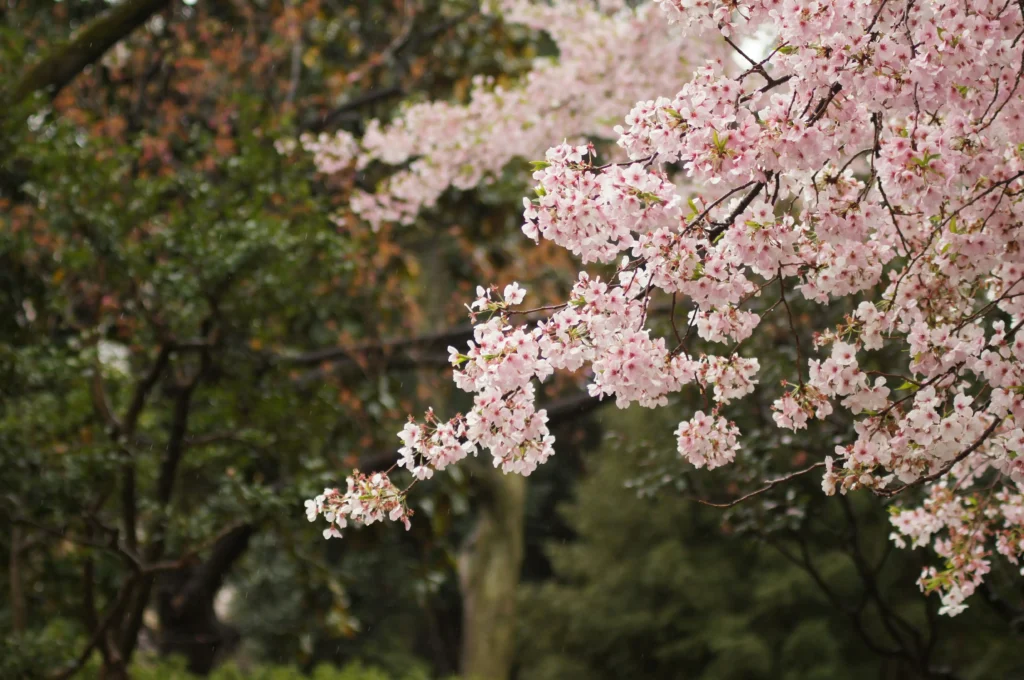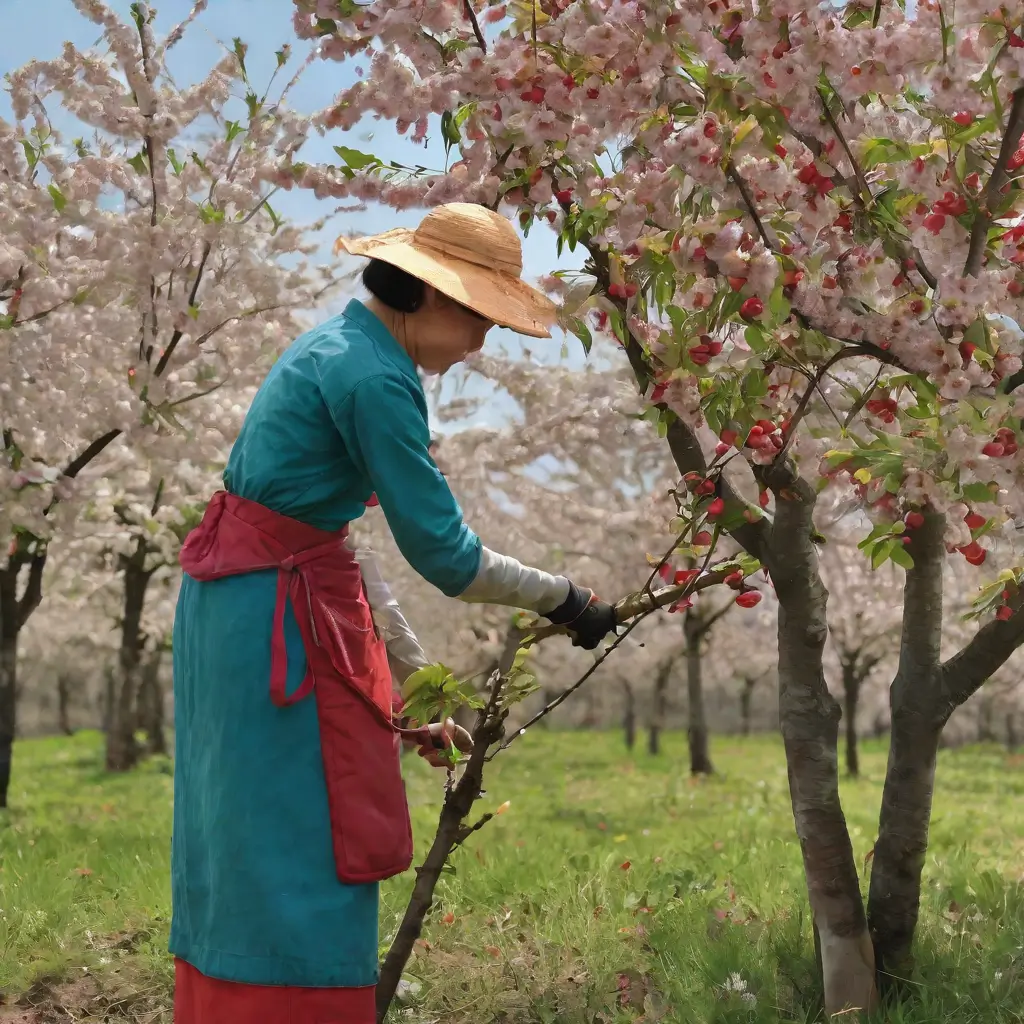Pruning is an essential orchard management practice for keeping cherry trees healthy and productive. While cherry trees can be pruned any time of year, the timing of pruning makes all the difference. Cutting your cherry trees at the optimal time encourages new growth, prevents disease, and avoids interfering with fruit production.
The Best Time to Prune Cherry Trees is Early Spring
The ideal window for pruning cherry trees is early spring, before the tree breaks dormancy. This timing gives the tree time to heal cuts before the growth cycle starts. Specifically, you’ll want to prune in the short timeframe when:
- The tree is fully dormant – leaves have dropped and there is no green tissue showing
- The tree has reached full chill hours to break dormancy
- Buds are swelling but have not yet cracked open
- No freezing weather remains that could damage fresh wound sites
So, When is the best time to prune cherry trees? The window generally falls during February to early March, but can vary slightly by climate and variety.
Here’s a handy table summarizing the optimal timeframe:
| Month | Tree Status | Prune? | Reason |
|---|---|---|---|
| January | Dormant | No | Additional cold may still occur |
| February | Dormant, Chill hours met, Buds swelling | Yes | Wounds heal quickly |
| March | Buds expanding, Sap flowing | No | Avoid removing new fruit wood |
Pruning during active growth phases should be avoided as it directs energy away from fruit production and exposes fresh wounds.
Signs Your Cherry Trees Are Ready for Pruning
How can you accurately determine the small timeframe when dormant cherry trees are primed for pruning? Look for these signals that your trees have fulfilled winter chill hours and are gearing up to push new growth:
- No leaves or green tissue – Trees will be entirely dormant without any active leaves or shoots.
- Plump, swollen buds – Buds will appear fatter than their winter state, filled with next season’s leaves/flowers.
- Tight, closed buds – While the buds are readying to open, the bud scales will remain tightly closed shut until just before bloom time.
- No chance of frost – Your area must be past the average final frost date, so pruning cuts won’t risk cold damage. Consult frost dates for your localized climate.
Once you see all these signs, it’s safe to start pruning cherry trees in that short spring transition window before sap flow accelerates and buds crack open.
Necessary Pruning Equipment
Pruning mature cherry trees requires making cuts on branches up to 2 inches thick. Having the right pruning tools on hand will make the job much easier. Equip yourself with:
- Bypass Hand Pruners – Curved blade hand shears make clean cuts on stems up to 1/2 inch diameter.
- Loppers – Long handled pruners to cut thicker branches around 1.5 inches. Look for geared mechanisms for max leverage.
- Pruning Saw – A curved saw blade prunes old branches over 2 inches across. Get one extending on a pole for tall cherry tree heights.
- Cleaning Supplies – Disinfect pruning tools before/after with isopropyl alcohol to prevent spreading disease between trees. Use bleach to clean large wound sites.
Sharp, clean tools ensure an efficient pruning job and improved tree recovery. Consider having any power tools sharpened before the busy pruning season starts.
Where, Why, and How Much to Prune Cherry Trees
Once your early spring pruning window opens, use that opportunity to:
- Remove dead, diseased, or damaged wood – Pruning out infection stops its spread and improves tree vigor.
- Thin overly dense branching – Opening up the center allows better sunlight and airflow penetration to reduce pest issues.
- Guide future growth direction – Strategic limb selection directs expansion into desired tree structure and form.
- Rejuvenate old trees – Moderate pruning stimulates new growth to keep aging trees productive.
When deciding where and how much to cut when pruning cherry trees, follow these basic rules:
- Prune lightly – Cherry trees should never be heavily pruned. Remove no more than 20% of living tissue to avoid shock.
- Cut close to trunk – Angle cuts just outside the branch collar without leaving stubs. Avoid ripping bark.
- Favor outward facing buds – These grow into scaffold branches in strong, open facing structure.
- Build even scaffold branching – Keep major limbs evenly spaced around the tree instead of clustered on one side.
- Remove inward Rubbing branches – Crossing limbs that rub together become wounded entry points for infection.
Proper pruning technique matched with restrain from overcutting keeps cherries healthy while directing tree growth patterns.
Pruning Cuts to Avoid

Just as important as knowing where and how much to prune cherry trees is recognizing what types of cuts should be avoided. Improper pruning can lead to permanent damage or disease entry points. Never use these harmful pruning methods on cherry trees:
- Flush Cuts – Cutting into the branch collar removes the tissue that seals wounds. Such flush cuts disrupt the tree’s natural healing systems.
- Stub Cuts – Leaving partial stubs invites dieback and decay into the remaining branch portion. Always prune branches completely to the trunk.
- Topping – Cutting large branches and leaders drastically back to stubs stresses the tree. Regrowth is weakly attached and prone to breakage.
- Thinning the Center – Removing too many inner branches exposes tender bark tissue to scalding sunburn.
Adhering to proper cut placement guidelines keeps your cherry trees protected. Match pruning restraint with the tree’s tolerance level.
Aftercare Following Cherry Tree Pruning
Fresh pruning wounds require aftercare to heal cleanly. Promote rapid recovery through:
- Wound Treatment – Coat cuts over 1 inch wide with tree sealant to prevent drying and infection entry.
- Watering – Increase irrigation frequency after pruning to aid the tree’s overdrive healing systems.
- Delayed Fertilizing – Hold fertilizer applications until midsummer to avoid pushing tender new growth too early.
- Pest Monitoring – Watch for pest infestations trying to exploit new open wounds as infection courts.
Well-timed dormant pruning of cherry trees followed by appropriate aftercare provides strong disease resistance and rapid would closure.
What to Expect After Pruning Cherry Trees
Correctly pruning mature cherry trees in early spring has the following effects:
- One year fruit production halt – Removing the previous season’s fruiting wood necessitates a season for the tree to regrow flower buds. But…
- More fruit in following years – Strategic pruning strengthens structure for improved yields over the long term.
- Moderate growth flush – Severe pruning invigorates excessive woody growth. But light pruning incites just moderate stimulation.
- Rapid healing – Early spring’s rising sap flow resources wounds to seal quickly before disease threats arise later in spring.
- Improved structure – Redirecting limb growth opens densely branched trees for increased light exposure and stronger woody growth.
So while pruning requires an initial fruiting sacrifice, this season of rejuvenation pays off in the long run through disease resistance and greater harvests in the coming years.
Conclusion
Timing remains the key for effective cherry tree pruning. Cutting trees while fully dormant in early spring strikes an optimal balance between active healing systems and minimized infection courts. Monitoring for visual swelling bud signs determines when your local microclimate hits this spring pruning sweet spot.
While pruning is never completely without stress or risk, adhering to proper technique guidelines matched with aftercare support brings rich rewards for cherry tree longevity and productivity. Your patience in taking a year off fruit harvest will be compensated with more bountiful, healthy crops in the coming seasons.
